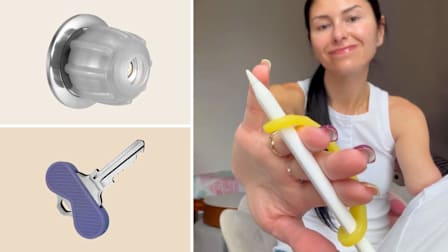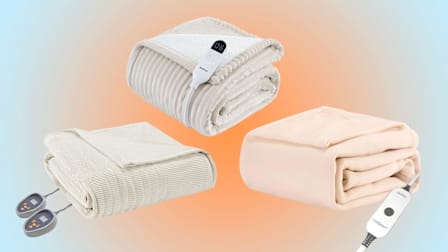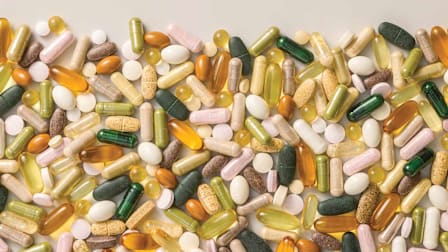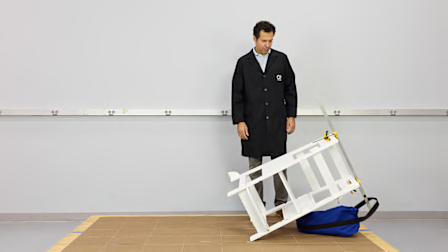Are Baby Wipe Warmers Safe?
They’re warm and soothing when temperatures drop, but baby wipe warmers may also be a breeding ground for bacteria, experts say
When you shop through retailer links on our site, we may earn affiliate commissions. 100% of the fees we collect are used to support our nonprofit mission. Learn more.
The race to stock up on baby items that make life easier and more convenient begins the minute you find out you’re expecting. This is also the time when you may discover the baby product market is vast and temptations are endless. It isn’t always easy to predict whether that cool-looking gadget will sit in the corner collecting dust or even which dangerous children’s products you should avoid.
Baby wipe warmers exist in a gray area that sits between want and need. The diapering process can be stressful for an infant, and the thought of changing your baby with comforting warm wipes is a major reason parents might invest in a warmer. Others appreciate how the feel of a warm wipe may be less disruptive to their baby during nighttime diaper changes and help them keep baby’s sleep routine on track.
How Do Baby Wipe Warmers Work?
To understand why experts and parents are growing concerned about baby wipe warmers, it helps to know how they work. Wipe warmers resemble a box of baby wipes, which can be a pro for parents who don’t want yet another gadget that takes up lots of room. They usually feature a top compartment that you lift and fill with disposable baby wipes or cloth wipes and a top flap for removing wipes and snapping closed to keep wipes dry.
Most baby wipe warmers operate via electricity, and you’ll find two types of designs: top and bottom warmers. (Note: The American Academy of Pediatrics (AAP) refers to them as dispensing heat from the top or heat from the sides.) Those that have internal heating functions at the top, like the Hiccapop Baby Wipe Warmer and Dispenser (Amazon, Hiccapop), are ideal for warming just a few wipes at a time and, as Hiccapop claims, its “top-heated design keeps wipes at the top warm without drying out lower wipes.” Wipe warmers with base heating functions, such as Prince Lionheart EVO Baby Wipes Warmer (Amazon, Prince Lionheart), are designed to keep all wipes warm and are particularly useful if you use a lot of wipes in one session.
But if you choose to include a baby wipe warmer in your nursery, some work will be required on your part. Some wipe warmers, like PureBaby Wipe Warmer with Digital Display (Amazon, Pure Baby, Walmart), have a moistening sponge or insert pillow at the base to keep wipes warm and moist. (Note: PureBaby recommends swapping sponges for new ones every three months, while the Prince Lionheart EVO Baby Wipes Warmer features a pillow that it says should be changed every three months.) Wipe warmers like the Munchkin Mist Wipe Warmer feature a water reservoir that needs to be refilled.
Other perks you’ll find in some models include variable heat settings (more on those in a bit), night-lights, auto shut-off functions, and transparent windows that allow you to see how many wipes are left in the warmer.
Are Baby Wipe Warmers Safe?
Here’s where things take a turn for the fuzzy. Baby wipe warmers are not regulated by the Consumer Product Safety Commission, though standards from Underwriters Laboratories (UL), a third-party certification company, likely apply because they are considered electric heating appliances, according to a representative at the CPSC.
The majority of baby wipe warmer complaints and recalls involve electric shocks, fire hazards, and cracked devices—though it’s worth noting there haven’t been recent recalls or complaints about wipe warmers on the CPSC website. No results turned up when I searched for health concerns like bacterial growth and, at the time of publishing, the CPSC has not responded to further questions about whether complaints related to bacteria have been filed.
While there are no current studies that link baby wipe warmers to bacterial growth or health scares among babies, some experts say the very act of heating baby wipes can create conditions that may be more hospitable to germs.
“The general concern is that in potentially heating wipes, they’re closer to the human body temperature, and therefore more of an environment for bacteria and fungi to ‘set up shop,’” says Theresa M. Fiorito, MD, a pediatric infectious disease physician at NYU Langone Hospital on Long Island, N.Y. “Theoretically, if there is a break in the skin barrier and colonization of bacteria/fungi on the wipes, it could cause a skin infection.” Fiorito says that this could mean anything from an infected wound to cellulitis, which is commonly referred to as “a Staph infection.”
Furthermore, the ingredients found in baby wipes differ greatly from one brand to another and the interaction of certain wipes ingredients with heat poses another potential health risk.
Baby wipes are typically formulated with three basic ingredients: water, surfactants for cleansing, and preservatives that help prevent microorganism growth that can occur in water. Additives like fragrances or aloe vera then vary from brand to brand. The red flag here is that the preservative systems in most baby wipes on the market will be designed to work at or around room temperature, says Angelo Landriscina, MD, a board-certified dermatologist with Ever/Body Williamsburg, in Brooklyn, N.Y.
“Exposing them to higher temperatures for long amounts of time may increase the risk of microbes such as bacteria or fungi growing on them,” Landriscina says.
The FDA has not issued a statement specifically about baby wipe warmers, but on its website, it warns that baby wipe ingredients and heat can have negative consequences: “As with all cosmetics, store wipes properly. If they are exposed to temperature extremes, such as in a hot or cold car, they may dry out, or the temperature extremes can cause changes in the ingredients. For example, the preservatives that protect against bacteria and mold may break down and not be able to do their job. Also, bacteria and mold may grow faster in a warm place.”
Ashita Kapoor, associate director of product safety at Consumer Reports, warns that heat exposure and baby wipes don’t often mix well together. "As practical as it may be to have a pack of wipes in the backseat of the car or trunk, that may lead to the wipes drying out if not sealed properly,” Kapoor says. “Hot temperatures can be a risk for mold and bacteria growth. You also want to make sure you tightly close the package before putting it away."
Can Antimicrobial Additives in Baby Wipe Warmers Prevent Bacterial Growth?
After researching several baby wipe warmer manufacturers, I found that they seemingly haven’t been concerned enough to jump on the bacteria/wipe warmer bandwagon and changed up their models just yet.
At least one brand, Prince Lionheart, offers a warmer designed with a patented antimicrobial component called the EverFRESH system that it says is approved by the Environmental Protection Agency and that it claims prevents mold growth in the warmer. CR reached out to the EPA for comment but did not hear back by the time of publication. CR also attempted to reach Prince Lionheart for comment about the specific ingredients used in the EverFRESH system but did not receive a response.
Not speaking specifically about EverFRESH, Fiorito says, “I don’t know how well antimicrobials work to combat this, but chemical ingredients no doubt are rough on the skin.”
Is Plastic a Concern?
Another possible worry is that one 2020 study found baby wipes to contain microplastics. Because it’s no secret that heating up plastics can cause chemicals to leach out and that you should avoid placing plastic in microwaves, dishwashers, and even hot cars, the fact that baby wipes can contain plastic—and that some TikTokers are even sharing hacks in which they place the entire plastic container of wipes into the warmer to keep them from drying out—makes this more of a concern.
Does this mean that heating up plastic inside of a baby wipe warmer produces the same outcomes as heating up your lunch in a plastic container in the microwave? Not necessarily. We spoke with one plastic expert who says that, theoretically, heating plastics to body temperature or slightly above it would likely not pose a risk, but specific testing on these substances is needed to draw more definitive conclusions.
There are several factors to consider, like the type of plastic being heated, more specifics about the chemistry of the wipe, and the amount of heat the warmer is producing. Some baby wipe warmers have adjustable temperatures, and one brand offered on Amazon called Preve Deluxe Baby Wipe Warmer can be adjusted from 86° to 131° F. The impact that heat has on wipes could differ depending on your temperature setting. These points, along with a lack of data and testing, are all factors that keep experts from saying for certain that baby wipe warmers and plastics are risky co-partners.
Where to shop for a baby wipe warmer: Amazon, Target, Walmart
Should You Buy a Baby Wipe Warmer?
If your fingers are hovering above the “buy” button on a baby wipe warmer but you’re undecided, the short answer is: The jury is still out on whether baby wipe warmers are worth the investment.
According to Landriscina, they are unnecessary, and he is not aware of any potential health benefits to using warm wipes, while Fiorito says her opinion is that they are a waste of money. According to the AAP, there’s about a 40 percent difference between a baby’s body temperature, which is 98.6° F, and regular damp wipes, which are roughly 60° F. The AAP says it’s “reasonable” to think warm wipes are less shocking to a baby’s skin, but “realistically speaking, though, most babies are not afforded this luxury and get used to cool wipes right from the start.”
@consumerreports Can the harness on your high chair prevent a child from standing on the seat? We test high chairs for safety, ease of use, and ease of cleaning. Tap the link in our bio to find the best high chair for your family. #babytok #parentsoftiktok #highchair
♬ original sound - Consumer Reports

















